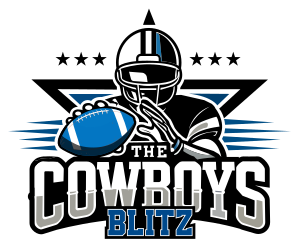joseephuss
Well-Known Member
- Messages
- 28,042
- Reaction score
- 6,920
http://sports.yahoo.com/news/ncaab--lance-thomas-lawsuit-could-test-integrity-of-ncaa-.html
On Dec. 21, 2009, Lance Thomas, then a senior starting forward at Duke, walked into Rafaello & Co., a boutique jeweler on 47th Street in midtown Manhattan that caters to celebrities and professional athletes.
The 21-year-old Thomas bought a black diamond necklace, a diamond-encrusted watch, a diamond cross, diamond earrings, and a black diamond pendant in the shape of *****' head. The grand total: $97,800. He paid $30,000. The bill of sale called for the rest within 15 days.
The payment never came, and when the Associated Press on Friday reported the details of his spending spree in a lawsuit seeking payment from Thomas, it sounded the opening bell to what could be a landmark case that affects all of college athletics.
Not only does the NCAA have a potential infractions case on its hands that could touch Mike Krzyzewski's legendary program and cause the vacating of Duke's 2010 NCAA title, it could serve as proof of whether the NCAA is truly willing to equally enforce its rules no matter the accused.
Or whether its current system is even still viable.
At this point, nothing is certain. The NCAA and Duke say they are aware of the lawsuit. There is no guarantee there will even be an investigation.
Still, this is a lot of smoke.
The first eye-raising detail, of course, is how a college senior had $30,000 to spend on jewelry. That's an exceptional amount of money for even well-off Americans. While Thomas' scholarship might have freed up a college fund – or the North Jersey native could've earned the money – it's still a lot.
You can speculate, since this is college basketball, about agents or runners or boosters, but there is no allegation of any of that. It's premature to assume anything other than Lance Thomas or his family earned the money within NCAA rules.
In this case, it might not matter. The more germane issue is that the jeweler effectively provided Thomas with a $67,800 loan – the remaining balance on the purchase.
NCAA rules are clear that a student-athlete can't receive any "extra benefit" based on his celebrity as a player or against future professional earnings.
On Dec. 21, 2009, Lance Thomas, then a senior starting forward at Duke, walked into Rafaello & Co., a boutique jeweler on 47th Street in midtown Manhattan that caters to celebrities and professional athletes.
The 21-year-old Thomas bought a black diamond necklace, a diamond-encrusted watch, a diamond cross, diamond earrings, and a black diamond pendant in the shape of *****' head. The grand total: $97,800. He paid $30,000. The bill of sale called for the rest within 15 days.
The payment never came, and when the Associated Press on Friday reported the details of his spending spree in a lawsuit seeking payment from Thomas, it sounded the opening bell to what could be a landmark case that affects all of college athletics.
Not only does the NCAA have a potential infractions case on its hands that could touch Mike Krzyzewski's legendary program and cause the vacating of Duke's 2010 NCAA title, it could serve as proof of whether the NCAA is truly willing to equally enforce its rules no matter the accused.
Or whether its current system is even still viable.
At this point, nothing is certain. The NCAA and Duke say they are aware of the lawsuit. There is no guarantee there will even be an investigation.
Still, this is a lot of smoke.
The first eye-raising detail, of course, is how a college senior had $30,000 to spend on jewelry. That's an exceptional amount of money for even well-off Americans. While Thomas' scholarship might have freed up a college fund – or the North Jersey native could've earned the money – it's still a lot.
You can speculate, since this is college basketball, about agents or runners or boosters, but there is no allegation of any of that. It's premature to assume anything other than Lance Thomas or his family earned the money within NCAA rules.
In this case, it might not matter. The more germane issue is that the jeweler effectively provided Thomas with a $67,800 loan – the remaining balance on the purchase.
NCAA rules are clear that a student-athlete can't receive any "extra benefit" based on his celebrity as a player or against future professional earnings.

